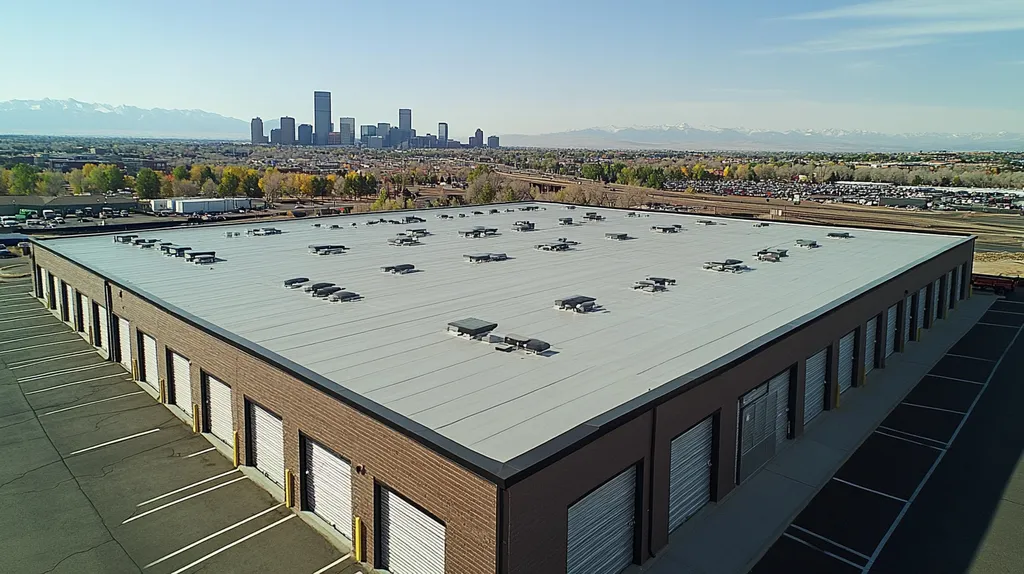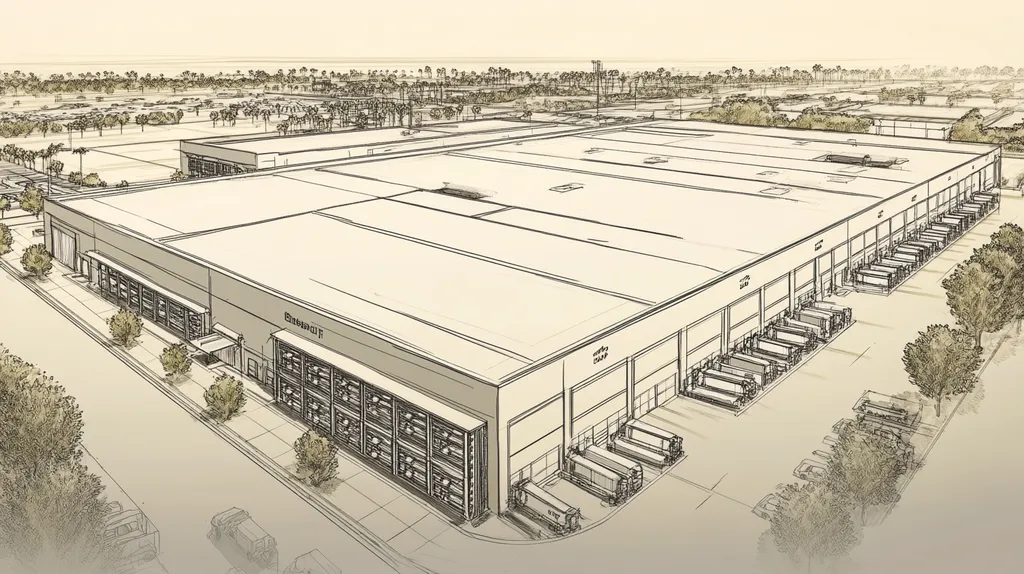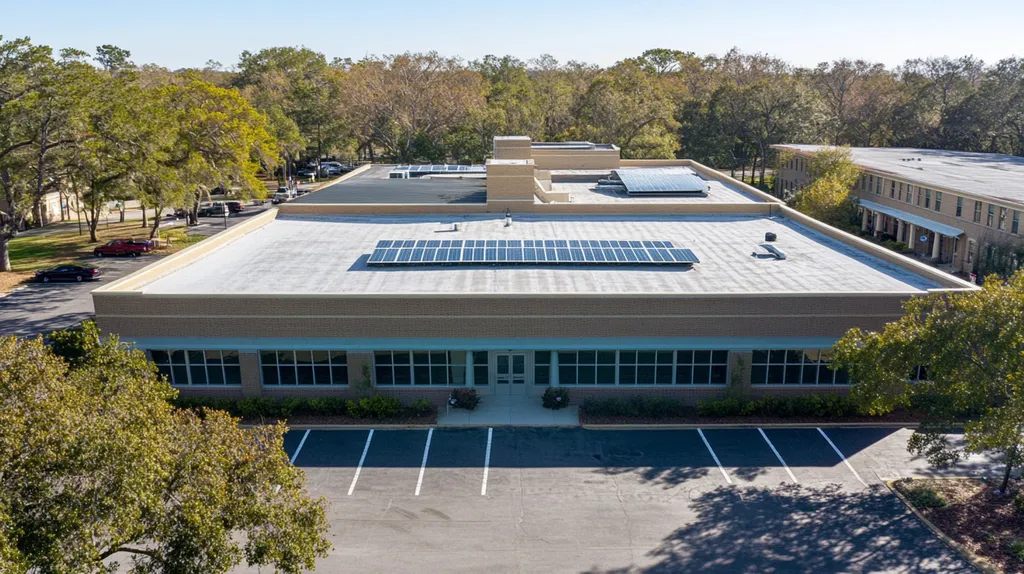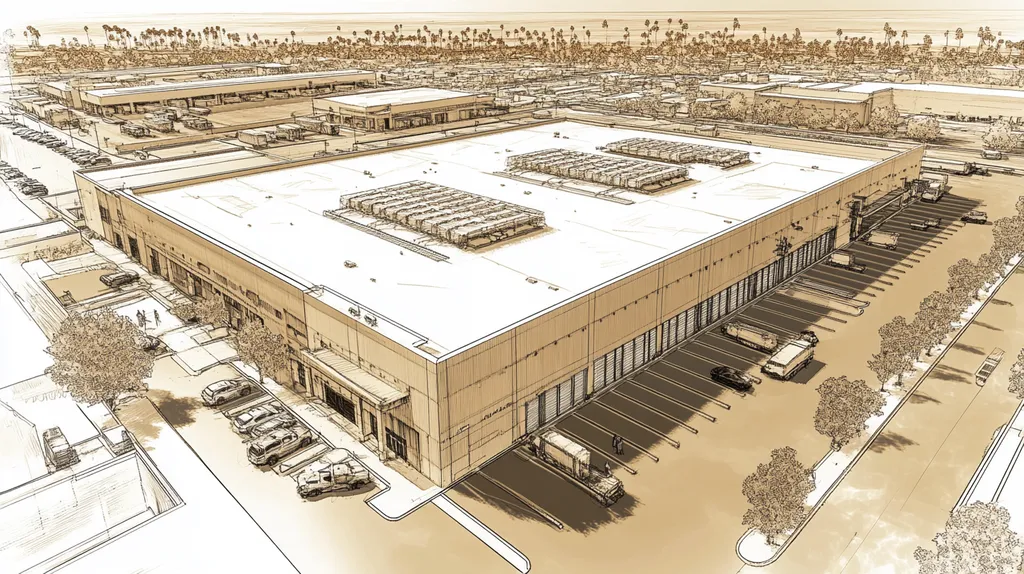In commercial roofing, installation methods can mean the difference between a roof that lasts 30 years and one that fails in under a decade. Industry studies show that 90% of premature roof failures stem from poor installation practices, costing property owners an average of $250,000 in emergency repairs and business disruptions.
From material compatibility to weather resistance, every installation decision impacts long-term durability. Yet many property professionals struggle to navigate the complex web of performance factors, financial considerations, and compliance requirements.
This comprehensive guide provides actionable solutions for optimizing installation methods, helping property owners safeguard their investments while maximizing roof longevity.
SECTION 1: PERFORMANCE FACTORS
In the world of commercial and industrial properties, a roof is more than just a protective cover; it’s a vital investment that impacts profitability. According to a study by the Roofer’s Guild, poor installation or material choices can cost property owners up to $50,000 in unexpected expenses throughout a roof’s lifetime. This staggering figure highlights the importance for property professionals to select the right installation methods and materials, paving the way for roofs that stand up to environmental challenges.
Material Selection and Compatibility
Choosing the right materials for a roof is crucial to achieving longevity and durability. Certain roofing systems outperform others depending on how well they match the underlying structures. For instance, installing TPO membranes on a metal deck without the proper insulation can lead to serious issues down the line.
Incompatibility can spell disaster, resulting in premature failures. A classic example is using a PVC membrane on a wooden substrate; this mismatch doesn’t provide the necessary support for lasting performance, which can lead to warping and leaks that threaten the entire building’s integrity.
It’s essential for professionals to be aware of local building codes and the warranties associated with specific materials. Many warranty claims are denied simply because of improper material selection, exposing property owners to financial risks.
Investing in high-quality, compatible materials can significantly enhance the overall performance of roofing systems. By prioritizing solutions that work together, property professionals can dramatically increase both the lifespan and durability of their roofs.
Key Action Items
Weather Resistance and Durability
Weather resistance plays a pivotal role in determining roof durability. In regions prone to harsh weather, roofs must be equipped to handle severe winds, heavy rainfall, and substantial snow loads. Overlooking these environmental risks can lead to extensive damage, resulting in high repair or replacement costs.
For example, granular surface asphalt roofs are more vulnerable to wind damage than smooth surface systems, which are better suited to resist uplift forces. By analyzing local weather patterns, property managers can choose roofing systems that effectively manage varying conditions.
Thanks to advancements in technology, modern coatings and sealants can significantly improve a roof’s resistance to UV rays and drastic temperature fluctuations. Applying these protective products during installation can extend the roof’s lifespan and safeguard the underlying materials from deterioration.
Integrating weather-resistant features as part of the installation process is a proactive strategy that prevents premature failures. This approach not only protects property investments but also ensures that roofs continue to perform optimally throughout their expected lifespan.
Key Action Items
Energy Efficiency and Thermal Performance
Energy efficiency has become a cornerstone of modern commercial roofing, especially with the surging energy costs. Roofs designed to reflect rather than absorb heat can lead to significant savings on cooling costs, especially in warmer climates. High reflectivity coatings are increasingly popular, offering noticeable reductions in utility bills.
Conversely, inadequate thermal performance can create hot spots, making HVAC systems work harder and increasing operational costs. Properties struggling to maintain consistent temperatures due to poor insulation face additional financial burdens. To address this, property professionals should prioritize insulation materials that provide effective thermal resistance.
Moreover, integrating green roofing technology boosts both energy efficiency and durability. Green roofs not only offer insulation benefits and reduce stormwater runoff but also enhance the visual appeal of a building.
By emphasizing energy efficiency, property professionals can optimize roofing performance while gaining a competitive edge in the property market. Highlighting a commitment to sustainable and cost-effective roofing solutions can attract tenants and increase resale values.
Key Action Items
SECTION 2: FINANCIAL CONSIDERATIONS
The financial ramifications of roofing installation methods are crucial to understand. A poorly selected roofing system can lead to overwhelming costs over time, potentially draining operational budgets. Shockingly, businesses can face expenses exceeding $20,000 annually due to roof failures, encompassing repairs and productivity losses. Being savvy about these financial factors allows property owners and facility managers to make informed decisions that enhance roof durability while keeping costs manageable.
Initial Installation Costs and Budgeting
When it comes to roofing, initial installation costs are a crucial consideration. Different roofing systems come with varying price tags, and opting for quality upfront often pays off handsomely in the future. For instance, while a commercial TPO roof may initially cost more than a traditional asphalt roof, the long-term savings can be substantial.
Keep in mind that hidden costs—such as permits, labor, and materials—can add up quickly and should be factored into the budget. A comprehensive budget projection can safeguard against unforeseen financial pitfalls. Good budgeting means not only considering immediate expenses but also anticipating future repair needs.
By meticulously weighing initial costs against the overall value, property owners can make smart, economically sound choices that support roof durability and efficiency.
Key Action Items
Long-Term Maintenance and Repair Expenses
Long-term maintenance and repair expenses can have a significant impact on a property’s financial health. Most commercial roofs require regular inspections and maintenance to maximize their lifespan. For instance, flat roofs often need re-coating every few years, while sloped roofs require ongoing cleaning and minor repairs.
If regular maintenance is neglected, it can lead to costly repairs down the line. Investing in a proactive maintenance plan is essential; property owners who prioritize upkeep can save thousands by avoiding emergency repairs and extended downtime.
For instance, an annual maintenance investment of $1,500 could save property owners up to $10,000 in emergency repair costs. Recognizing these ongoing expenses is vital for crafting a robust financial strategy and optimizing the roofing investment.
Key Action Items
Warranty and Lifecycle Cost Analysis
Warranties can serve as a valuable financial safety net for property owners. A robust manufacturer’s warranty often covers substantial repair and replacement costs, potentially saving thousands over the roof’s lifetime. However, most warranties come with specific maintenance conditions that must be strictly adhered to.
Analyzing the total lifecycle cost of a roofing system is essential. This encompasses installation, expected maintenance, and repair expenses, as well as potential warranty claims. Conducting a lifecycle cost analysis can reveal that a more expensive system may actually prove more economical in the long run.
For example, while a metal roofing system may carry a higher upfront price, its lifespan can be twice that of an asphalt roof, yielding considerable long-term savings. By comprehensively assessing warranty and lifecycle costs, property managers can make informed choices that support sustainable financial planning.
Key Action Items
SECTION 3: COMPLIANCE REQUIREMENTS
Meeting building codes and regulatory standards isn’t just about following the law; it’s essential for ensuring the longevity and durability of commercial roofs. Ignoring these requirements can lead to expensive repairs and even premature roof failures. For example, the International Building Code (IBC) establishes vital guidelines that enhance the safety and lifespan of roofing systems. This section delves into the must-know compliance areas for property professionals to fortify their roofs.
Building Codes and Regulatory Standards
Adhering to building codes is a non-negotiable part of any roofing project. These regulations define material specifications, installation methods, and structure requirements to ensure roofs withstand local environmental challenges. For instance, in areas prone to high winds or heavy snowfall, specific reinforcements are mandated to protect property from climatic extremes.
Take Florida, for instance, where the Florida Building Code sets forth stringent installation techniques for roofs to combat hurricane threats. Property managers well-versed in these codes can steer clear of hefty fines and legal troubles. Moreover, compliance promotes a safer environment for occupants and safeguards investment assets.
Not meeting these standards not only jeopardizes safety but can also invalidate warranties on roofing materials. Engaging qualified contractors who are familiar with local codes is vital. Consistent inspections and audits will go a long way toward maintaining compliance and ensuring long-lasting durability.
Key Action Items
Environmental and Sustainability Compliance
With an increasing emphasis on sustainability, property owners are under pressure to adopt eco-friendly practices. Various regulations now advocate for the use of sustainable materials and energy-efficient designs in roofing systems. The LEED certification program, for instance, encourages the implementation of reflective roofing materials to minimize energy consumption.
Adopting sustainable roofing solutions not only adheres to regulations but can lead to long-term financial benefits. Energy-efficient roofs help lower heating and cooling costs while satisfying environmental criteria. Moreover, the incorporation of recyclable materials can significantly enhance a building’s sustainability rating.
Grasping these environmental standards is key for ensuring compliance and boosting a property’s market appeal. Roofs designed with sustainability at the forefront tend to last longer and elevate a brand’s reputation in today’s eco-conscious marketplace.
Key Action Items
Health and Safety Regulations
Health and safety regulations are non-negotiable in roofing projects, impacting both construction practices and long-term maintenance. The Occupational Safety and Health Administration (OSHA) lays out crucial guidelines to protect workers during installation and repair work. Adhering to these standards not only enhances worker safety but also reduces potential project delays.
For instance, implementing fall protection systems like guardrails and harnesses greatly decreases accident risks. Compliance with OSHA regulations can even favorably influence insurance premiums, benefiting a property’s financial standing.
Moreover, conducting regular safety training for roofing crews cultivates a culture of awareness and responsibility. When property managers prioritize health and safety compliance, they not only ensure a safer workplace but also contribute to the overall durability of their roofing systems.
Key Action Items
SECTION 4: RISK MANAGEMENT
Effective risk management is essential for property owners and facility managers aiming to prolong the life and reliability of their commercial roofs. Failing to properly assess risks can lead to costly leaks, weather damage, and hazardous situations. With over half of roofing failures tied to poor installation and maintenance, it’s crucial to recognize and address the vulnerabilities in roofing systems. This section will shine a light on leak points, weather-related risks, and the management of chemical and fire hazards to bolster roofing durability.
Identifying Potential Leak Points and Vulnerabilities
Every roofing system has its Achilles’ heel, and understanding these weak points is critical for preventing leaks. Roof penetrations, corner seals, and seams where materials come together are common culprits. Regular inspections are key to spotting these vulnerabilities before they turn into costly repairs.
Property owners should keep a watchful eye on areas like flashing joints and rooftop drains—often neglected during maintenance—that can lead to drainage issues. Without proper drainage, water pools and escalates the risk of leaks and roof damage. Proactive solutions, like upgrading drainage systems, can drastically boost durability.
Investing in advanced sealing technologies, such as liquid-applied membranes, provides seamless options that effectively combat leakage. Ensuring these materials work well with the existing roofing system is vital for success. Establishing a comprehensive inspection schedule with qualified professionals will help keep roofs in peak condition.
Key Action Items
Mitigating Weather-Related Risks and Damage
When it comes to roofing, weather is an ever-present threat. Extreme winds, relentless rains, and heavy snow can compromise roof integrity if not addressed. Approximately a quarter of roofing failures arise from intense weather conditions, making it imperative that property owners take action.
Understanding local climate patterns is vital for choosing the right roofing materials. For example, reflective coatings help to mitigate heat in warm climates, while robust insulation safeguards against severe cold. Tailoring roofing systems to address climate-specific risks enhances durability remarkably.
Thoughtful roof design, including slope and drainage considerations, can prevent water accumulation. Reinforced materials also provide better support against high winds and snow loads. Additionally, having a well-crafted emergency response plan can minimize weather-related damage and ensure prompt repairs, protecting both people and property.
Key Action Items
Managing Chemical and Fire Hazards
In any commercial setting, evaluating chemical and fire hazards is critical for safeguarding both the structure and its occupants. Many roofs are vulnerable to environmental factors that can pose risks. A thorough risk assessment is a vital starting point to mitigate these threats.
Choosing fire-resistant materials, such as Class A fire-rated options, significantly reduces fire risk, particularly for roofs exposed to potential external flames. Regular maintenance of fire safety equipment, like sprinklers and alarms on the roof, is essential for compliance with safety regulations.
Additionally, ongoing inspections for chemical spills or leaks are crucial, especially in industries handling hazardous materials. Proper containment and ventilation systems minimize risks related to chemical exposure while ensuring industry standards are met. Training staff on emergency protocols for chemical and fire incidents fosters awareness and preparedness, enhancing overall building safety.
Key Action Items
SECTION 5: OPERATIONAL PROCEDURES
Effective operational procedures are essential for maximizing roof durability and avoiding unnecessary repairs. When property owners overlook these critical steps, they steeply increase the risk of costly damage. In fact, poor installation techniques can cut a roof’s lifespan by up to 30%. This section covers the crucial practices of pre-installation inspections, the importance of correct application techniques, and the need for regular maintenance schedules.
Pre-Installation Inspections and Evaluations
Thorough pre-installation inspections are fundamental in safeguarding roof quality. Evaluating structural integrity, drainage systems, and existing materials helps identify potential vulnerabilities. For instance, a seemingly intact roof surface could be concealing moisture damage or inadequate drainage.
Spotting these issues early can prevent installation mistakes that compromise durability. Employing advanced tools like infrared thermography can help uncover hidden problems effectively. Additionally, consulting with experienced professionals during this stage ensures comprehensive evaluations are conducted correctly.
Documenting the findings from pre-installation assessments is crucial for maintaining transparency among all stakeholders. This ensures that subsequent installation processes adhere to best practices tailored to the building’s specific needs, laying a solid foundation for long-lasting roofing success.
Key Action Items
Proper Application and Installation Techniques
Correct application and installation techniques are pivotal for enhancing roof durability. Each roofing system has unique requirements that necessitate specialized skill during installation. For example, synthetic roof membranes rely on precise seam welding to prevent vulnerabilities.
Ensuring that the installation team is well-trained and informed about specific materials significantly influences the long-term success of the roof. Using the right fasteners, sealants, and installation angles can help thwart water intrusion and extend roof life. Following manufacturer guidelines is essential, as bypassing recommendations may void warranties.
Implementation of quality control checks during installation helps ensure standards are met. Routine oversight by a project manager can catch errors early, translating to cost savings and improved roof performance. A well-installed roof provides strengthened defenses against harsh environmental stresses.
Key Action Items
Regular Maintenance and Inspection Schedules
Establishing a routine maintenance and inspection schedule is vital for sustaining roof performance over time. Regular inspections, ideally twice a year, can identify early signs of wear, such as loose seams or accumulation of debris. Ignoring these minor issues can lead to leaks and extensive damage down the line, resulting in higher repair expenses.
Documenting all maintenance activities aids in planning future work and ensures warranty compliance. Leveraging a trusted roofing service to conduct inspections ensures expertise in evaluating the roof’s condition. This proactive strategy can unveil potential problems before they evolve into major concerns.
Moreover, aligning roofing audits with seasonal changes helps prepare for varying weather conditions. For instance, assessing the roof after heavy rains can highlight issues like water pooling. Consistent inspections and prompt maintenance extend the roof’s lifespan and durability while protecting the property investment.
Key Action Items
SECTION 5: OPERATIONAL PROCEDURES
Establishing effective operational procedures is crucial for maximizing roof durability. Ignoring these essential steps can lead to costly repairs and increased safety risks. In fact, improper installation techniques can shorten a roof’s lifespan by as much as 30%. This section outlines vital practices, such as conducting pre-installation inspections, employing proper installation techniques, and adhering to regular maintenance schedules.
Pre-Installation Inspections and Evaluations
Conducting detailed pre-installation inspections is fundamental to ensuring roof quality. Evaluating elements like structural integrity, drainage systems, and existing materials can reveal potential weaknesses. A roof surface that looks good may still hide issues such as moisture damage or drainage problems.
Catch these problems early to avoid installation errors that compromise the roof’s longevity. Utilizing advanced tools, like infrared thermography, can help reveal these hidden concerns effectively. Engaging experienced professionals during this stage ensures accurate evaluations, leaving no stone unturned.
Documenting findings from pre-installation assessments is crucial for maintaining transparency among all stakeholders. This process helps to ensure that any subsequent installation strictly follows best practices tailored to the building’s specific requirements.
Key Action Items
Proper Application and Installation Techniques
Utilizing the right application techniques is vital for enhancing roof durability. Each roofing system has unique specifications that require specialized skills during installation. For instance, synthetic roof membranes need precise seam welding to avoid potential weaknesses.
Training the installation team on specific materials significantly affects the roof’s overall performance. Correct fasteners, sealants, and installation angles are necessary to prevent water intrusion and extend the roof’s lifespan. Following manufacturer guidelines closely is essential; deviating from these recommendations may void warranties.
Implementing quality control checks throughout the installation process ensures that all standards are met. Consistent oversight by a project manager can identify and rectify errors quickly, translating to cost savings and superior roof performance.
Key Action Items
Regular Maintenance and Inspection Schedules
Establishing routine maintenance and inspection schedules is crucial for long-lasting roof performance. Regular inspections, ideally twice a year, can uncover early signs of wear, such as loose seams or debris accumulation. Ignoring these minor concerns can lead to leaks and serious damage, resulting in significant repair costs.
Documenting all maintenance activities enhances future planning and helps meet warranty compliance. Engaging a trusted roofing service for inspections ensures that evaluations are conducted with expertise. This proactive approach can identify potential issues before they evolve into major problems.
Additionally, aligning roofing audits with seasonal changes aids in preparing the roof for varying weather conditions. For instance, assessing the roof after heavy rain can detect water pooling. Consistent maintenance and prompt repairs extend the roof’s longevity and durability while safeguarding the property investment.
Key Action Items
The Bottom Line
With 90% of premature roof failures tied to poor installation practices, property owners can’t afford to overlook proper implementation methods. The financial stakes are clear: subpar installation leads to an average of $250,000 in emergency repairs and business disruptions.
From material compatibility to weather resistance, every installation decision shapes long-term durability. Advanced coatings, proper drainage systems, and reinforced sealing techniques can double a roof’s expected lifespan.
Property professionals who prioritize thorough pre-installation planning, engage qualified contractors, and maintain consistent inspection schedules protect their investments for decades. The difference between a roof that lasts 30 years and one that fails in under 10 often comes down to installation choices made on day one.
The message is clear: invest in proper installation methods today or pay significantly more tomorrow.
FREQUENTLY ASKED QUESTIONS
Q. What factors influence commercial roof performance?
A. Performance is influenced by material compatibility, weather resistance, and proper installation techniques. Selecting suitable materials and methods tailored to the building’s location and climate ensures longevity and reduces maintenance costs.
Q. How can I minimize costs for my industrial roof?
A. Prioritize quality materials and preventive maintenance to reduce long-term expenses. Understanding the initial costs and budgeting for inspections can help avoid unexpected repairs and enhance overall durability.
Q. What are essential compliance requirements for commercial roofs?
A. Compliance with local building codes ensures safety and durability. Regular inspections and engaging with qualified contractors familiar with regulations prevent costly mistakes and protect investments.
Q. How do I identify vulnerabilities in my commercial roof?
A. Regular inspections focusing on leak points, particularly in seams and penetrations, reveal vulnerabilities. Documenting findings and employing advanced tools can enhance your ability to identify and address issues proactively.
Q. What are the best practices for roof installation?
A. Best practices include thorough pre-installation inspections, following manufacturer guidelines closely, and ensuring the installation team is well-trained. Regular quality control checks throughout the process can significantly improve roofing durability.
Q. How often should I perform roof maintenance?
A. Ideally, conduct inspections twice a year, and after major weather events, to catch issues before they escalate. This routine helps maintain the roof’s integrity and longevity, protecting your investment.
Q. What additional factors contribute to roof sustainability?
A. Factors like choosing energy-efficient materials, incorporating green technology, and utilizing recyclable components can enhance sustainability. Understanding and following environmental regulations can also boost a property’s market appeal.










